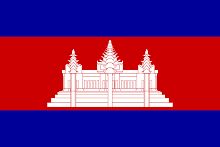De verklaring van UNESCO:
FIVE NEW CULTURAL SITES MAKE IT TO THE UN WORLD HERITAGE LIST
The United Nations agency mandated to conserve the world's heritage has inscribed new cultural sites in Viet Nam, China, Tajikistan, France and the Netherlands on the World Heritage List and agreed to the extension of two cultural properties in Germany and Norway.
The Thang Long Imperial Citadel in Viet Nam yesterday became the 900th site to be inscribed on UN Educational, Scientific and Cultural Organization's (UNESCO) World Heritage List. The Citadel was built in the 11th century by the Ly Viet Dynasty, marking the independence of the Dai Viet. It was constructed on the remains of a Chinese fortress dating from the 7th century and stands on drained land reclaimed from the Red River Delta in Hanoi.
The World Heritage Committee is meeting in Brasilia, Brazil, to review candidates for inclusion on its World Heritage List and assess the List of World Heritage in Danger.
Also gaining recognition is the historic monuments of Dengfeng in China. Mount Songshang is considered to be the central sacred mountain of China. At the foot of this 1500 metre high mountain, close to the city of Dengfeng in Henan province and spread over a 40 square-kilometre circle, stand eight clusters of buildings and sites, including three Han Que gates -- remains of the oldest religious edifices in China -- temples, the Zhougong Sundial Platform and the Dengfeng Observatory.
In Tajikistan, the Sarazm, which means "where the land begins," is an archaeological site bearing testimony to the development of human settlements in Central Asia, from the 4th millennium BCE to the end of the 3rd millennium BCE. The ruins demonstrate the early development of proto-urbanization in this region. The centre of settlement, one of the oldest in Central Asia, is situated between a mountainous region suitable for cattle rearing by nomadic pastoralists, and a large valley conducive to the development of agriculture and irrigation by the first settled populations in the region.
The Episcopal city of Albi in south-western France reflects the culmination of a medieval architectural and urban ensemble. Today the Old Bridge (Pont-Vieux), the Saint-Salvi quarter and its church are testimony to its initial development in the 10th and 11th centuries. Following the Albigensian Crusade against the Cathar heretics in the 13th century it became a powerful episcopal city. Built in a unique southern French Gothic style from local brick in characteristic red and orange colours, the lofty fortified cathedral dominates the city, demonstrating the power regained by the Roman Catholic clergy.
In the Netherlands, the 17th Singelgracht is a historic urban ensemble of the canal district of Amsterdam and was a project for a new "port city" built at the end of the 16th and beginning of the 17th centuries. It comprises a network of canals to the west and south of the historic old town and the medieval port that encirc
led the old town and was accompanied by the repositioning inland of the city's fortified boundaries, the Singelgracht.
The committee decided that Germany's Upper Harz mining water management system, which lies south of the Rammelsberg mines and the town of Goslar, would remain on the list. The facility has been developed over a period of some 800 years to assist in the process of extracting ore for the production of non-ferrous metals. Its construction was first undertaken in the Middle Ages by Cistercian monks, and it was then developed on a vast scale from the end of the 16th century until the 19th century. It is made up of an extremely complex but perfectly coherent system of artificial ponds, small channels, tunnels and underground drains.
Also to remain on the list is the Røros Mining Town in Norway. The history of the town of Røros is linked to the copper mines. Established in the 17th century, they were exploited for 333 years until 1977. Completely rebuilt after its destruct
ion by Swedish troops in 1679, Røros contains some 80 wooden one- and two-storey houses and a smelting house. Many of these buildings have preserved their blackened wooden façades, giving the town a medieval appearance. The site was first inscribed on the World Heritage List in 1980.
The new sites are in addition to 10 other mixed and cultural sites inscribed during the current session of the committee. The 10 are situated in Sri Lanka, the United States, Tanzania, Saudi Arabia, Australia, India, Republic of Iran, Marshall Islands and Republic of Korea.
The meeting opened on 25 July and will conclude on Tuesday. A total of 39 sites are being considered for inscription on the World Heritage List.
(VN: Aug 1, 2010)
.png)